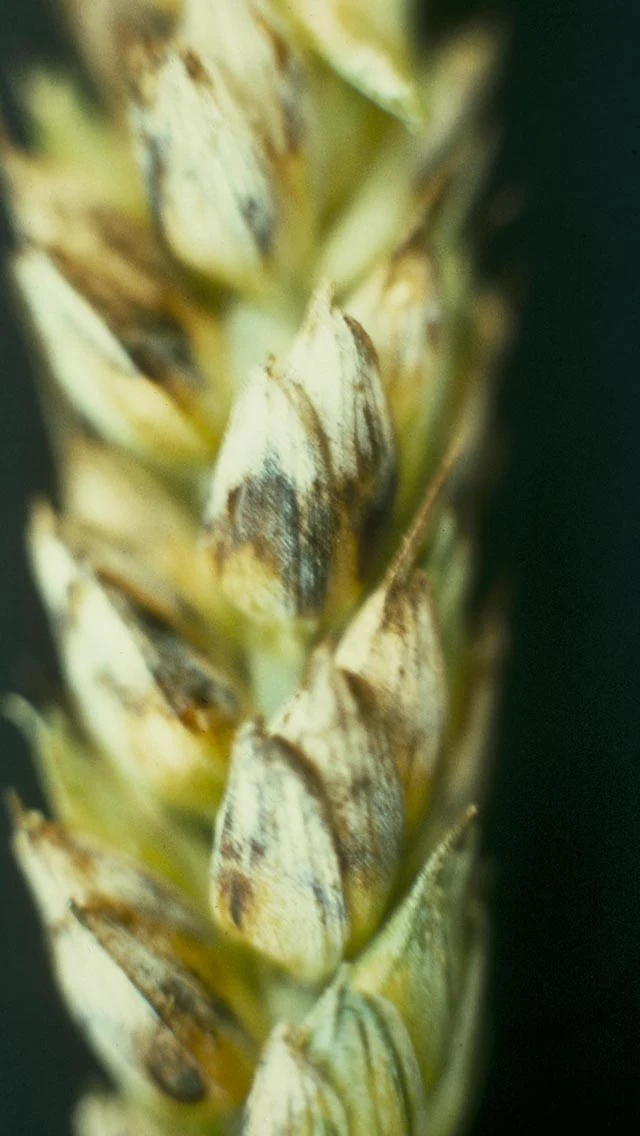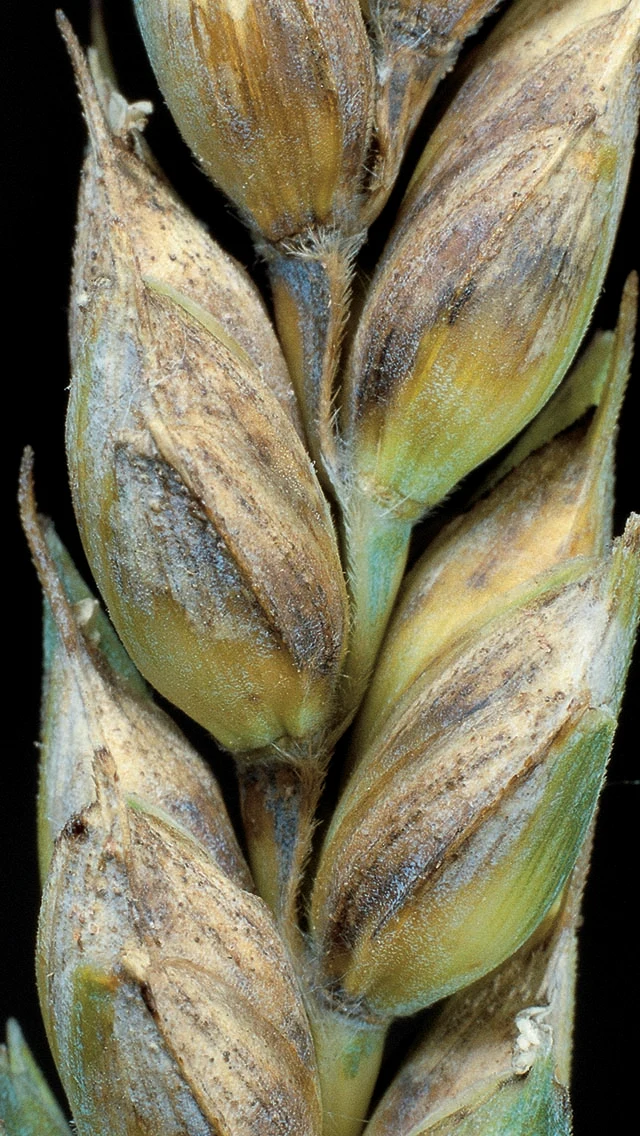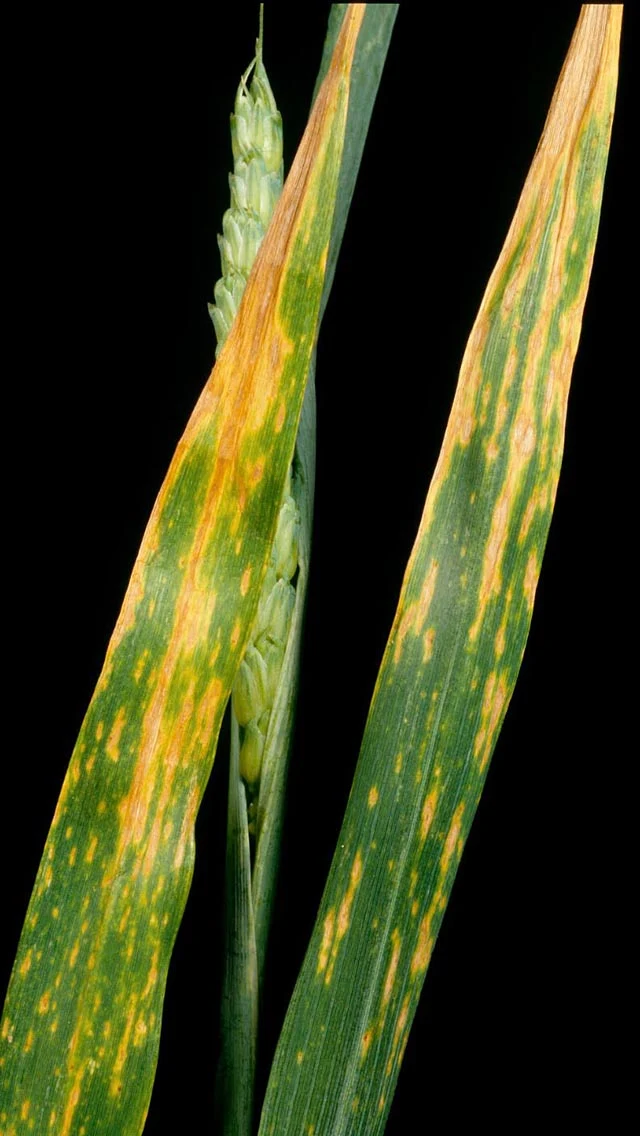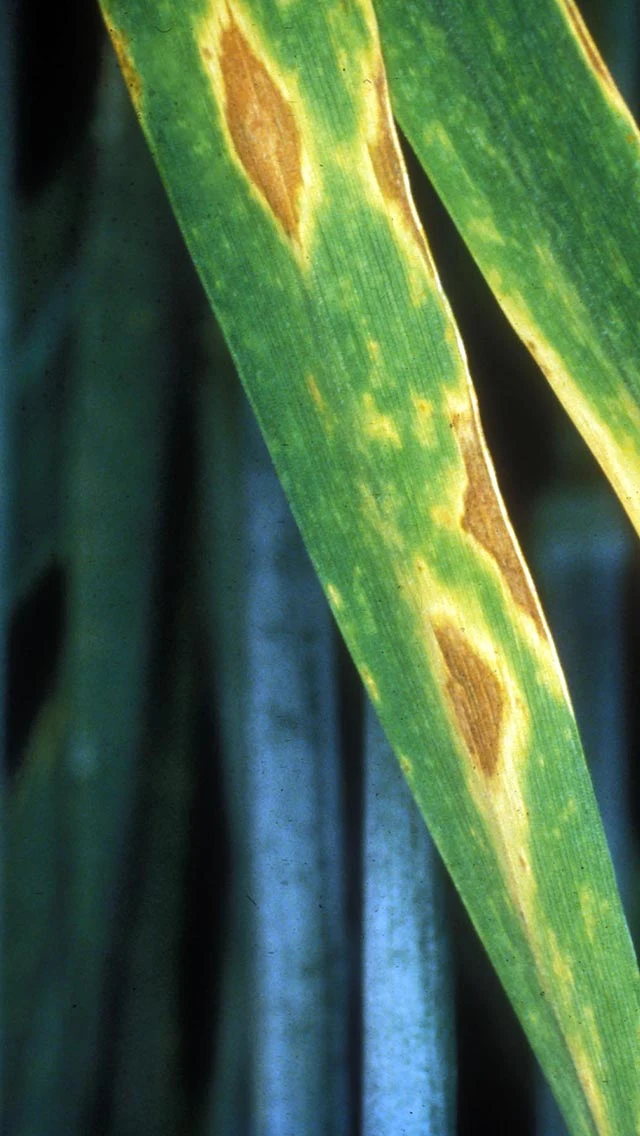
Glume Blotch/Septoria
Septoria nodorum leaf infections & classic leaf symptoms
Pathogen
Fungus
Hosts
Wheat, barley, rye
Symptoms
Septoria nodorum is seed-borne and the disease spreads from within the seed to infect the developing plant as it emerges which is described as Septoria seedling blight.
Symptoms on the leaf are brown oval lesions surrounded by a yellow halo and under suitable conditions these can coalesce to cover large areas of the leaf. The lesions do contain pycnidia but these are difficult to see in the field, (unlike the pycnidia of Septoria tritici which are clearly visible in the field) but under magnification these appear as small pale brown or pinkish structures.
Rain-splash spreads the disease from the lower leaves to the upper leaves.
On the ear purple or brown blotches on the ear (glume blotch) spread downwards from the tip of the glumes. As the ear ripens the blotches are less obvious compared to those on green spikelets.
Development
The source of infection can be the seed but more often diseased stubbles and grass weeds give rise to the inoculum. Spores are spread via wind-blown water droplets, rain-splash or dew.
Favourable Factors
Severe attacks normally associated with warm (15°C to 22°C), wet and humid weather. Early attacks predispose the ear to the late ear disease complex.
Importance
Was once considered to be the most important disease of wheat in the UK but in recent years this importance has declined significantly except in wetter areas in the south-west.
Grain filling can be impaired leading to yield reduction of up to 30% with reduced grain size.
Control
Correct choice of fungicides combined with choice of variety will give good control.
Varietal tolerance as indicated in the recommended list

Glume blotch on the ear

Glume blotch on wheat ear

Septoria nodorum leaf infections

Classic leaf symptoms


